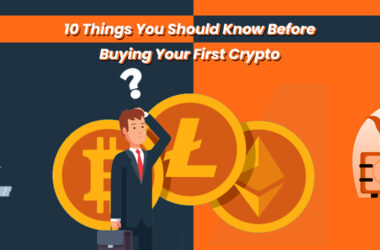NFTs gained huge success in 2021. Most of us millennials are familiar with the fundamentals of NFTs. However, there is still a large chunk of the society that couldn’t understand the evaluation of $3.4 million for the image of a golden monkey.
This is the era of financial assets. First bitcoin and now NFTs. Anything can acquire a hefty price tag. It is just a matter of time before something new enters the market and shows us insane monetary numbers.
Before that happens, you should understand the existing trends of the digital market. In this article, we will learn how an NFT works. But let’s start with the most basic question.
What is an NFT?
An NFT is a financial asset that represents digital data like audio, video, image, or anything digital. These unique tokens are encoded using blockchain, which works as a distributed ledger for recording the ownership and transactions of that particular NFT.
Blockchain is the same technology that keeps the crypto infrastructure functioning. However, NFTs are non-fungible assets. Therefore, every NFT holds a unique signature. In essence, no two NFTs are the same, and this contentment of owning a one-of-a-kind item makes NFTs so desirable.
There might be thousands of copies roaming around the internet, but there will be one rightful owner of an NFT at a time. The Blockchain used this digital scarcity as a selling point and integrated built-in authentication in every NFT. Every collector is after the globally visible proof of ownership rather than the NFT itself.
So, how do they keep this complex network functioning?
Well, here is….
…How an NFT works?
As of now, you can only deal with an NFT on platforms that support blockchains like Ethereum, Polygon, Solana, etc. Things might change once other platforms start supporting blockchains.
Even as we speak, Meta is testing NFT support on Instagram.
To keep the transactions secure and automated, top NFT markets like OpenSea and Rarible keep the transaction exclusively limited to blockchain-powered digital currency like Ethereum, Bitcoin, etc.
For secondary purchase, both parties can mutually decide the currency of the transaction but it might lead to a swindle. Therefore, you should stick to the mainstream NFT markets.
Now that you know the platform, let’s see how an NFT works:
- All the NFTs are stored on a blockchain, which works as a distributed public ledger. Meaning, that anyone can validate the ownership and transaction history of that NFT.
- Artists can mint their NFTs or previous owners can showcase their NFTs for bidding on any NFT marketplace. An NFT can be anything from an NBA clip to a signature tweet.
- Buyers with a crypto wallet can place their bids on their favorite NFTs. After the bidding duration ends, the NFT marketplace completes the transaction and the ownership is transferred to the highest bidder. The owner of the NFT also holds the authority to end the bidding anytime.
- NFTs are highly collectible items. The art might be floating around the internet but the rightful NFT owner gets ownership rights of the original file.
- The value of an NFT is determined by its demand in the market. You can hold your NFT as a financial asset or you could pass on the ownership at the right price.
Conclusion
NFT is a demand-driven market. NFTs were there in the mainstream since 2017. In 2021, they got the chance to make it big and they bombarded the digital asset market. However, just like any other financial asset, it carries the risk of getting socked.
But then again, who would have thought of making millions of dollars by selling digital stickers.









